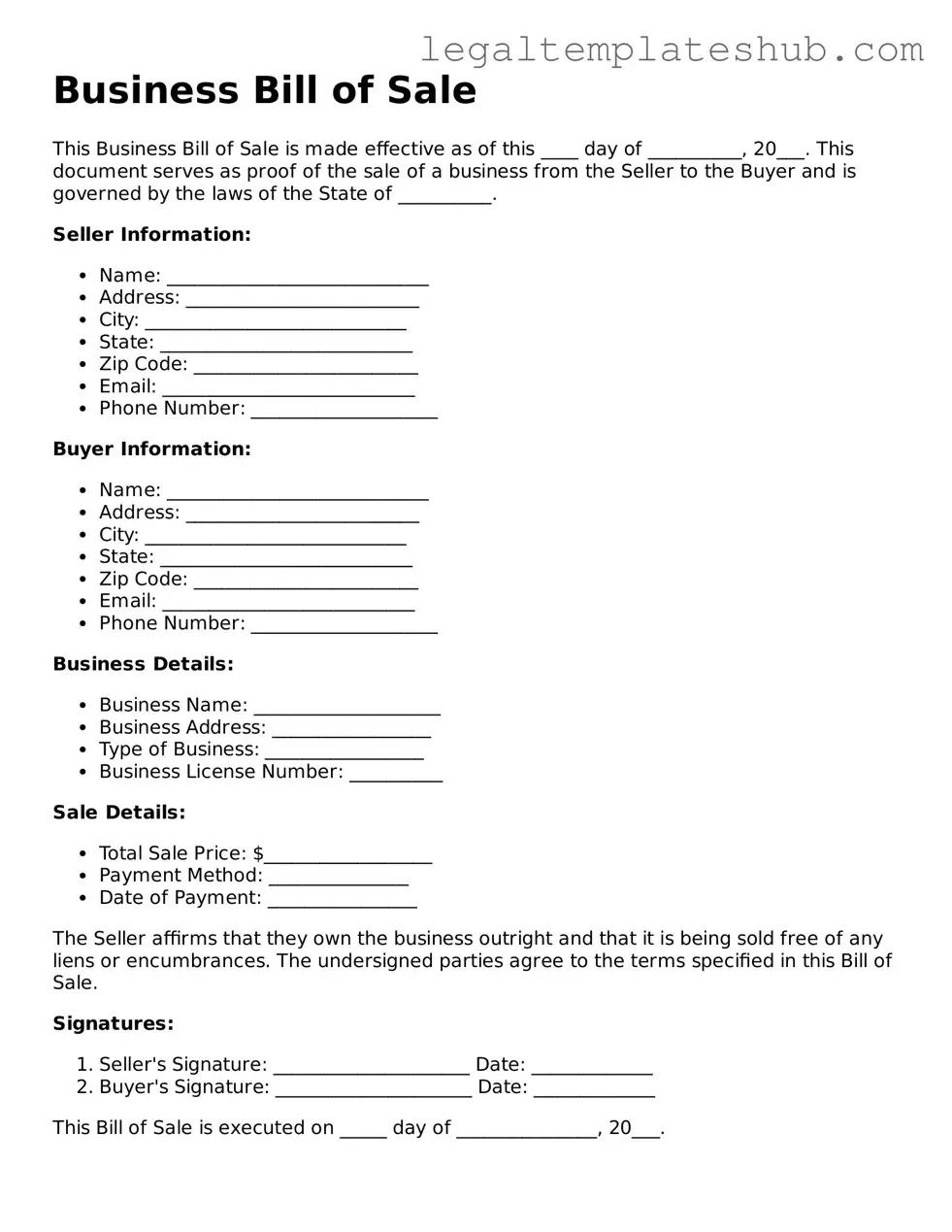Printable Business Bill of Sale Template
A Business Bill of Sale is a legal document that transfers ownership of a business or its assets from one party to another. This form outlines the details of the transaction, ensuring both parties understand their rights and responsibilities. To protect your interests, fill out the form by clicking the button below.
Access Editor
